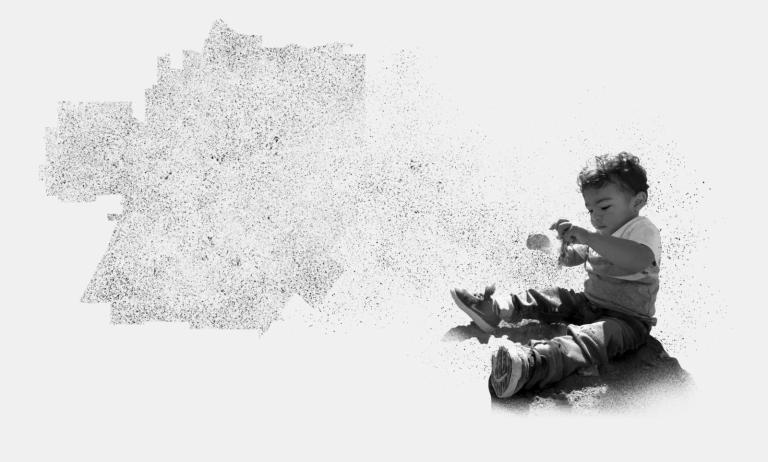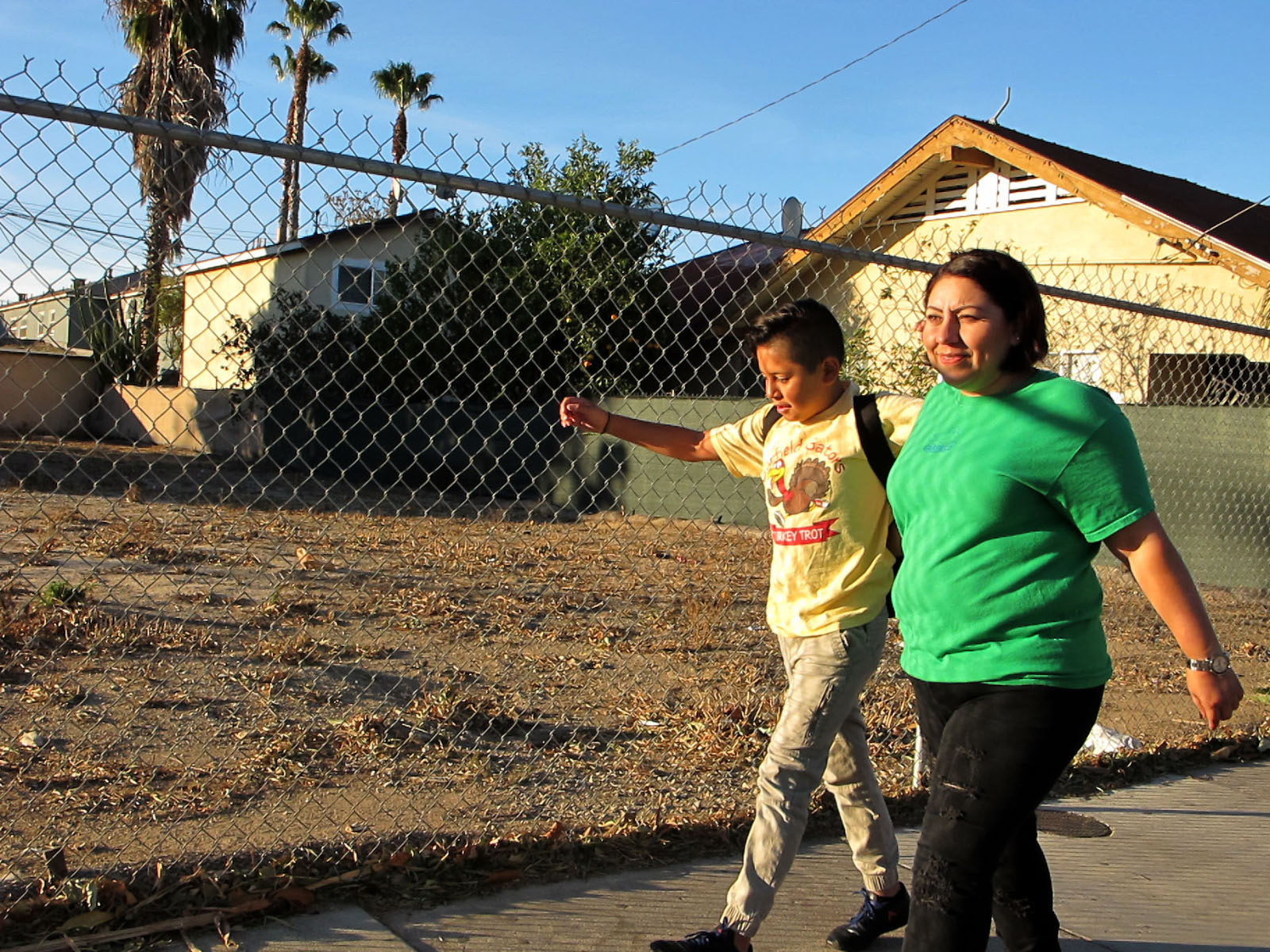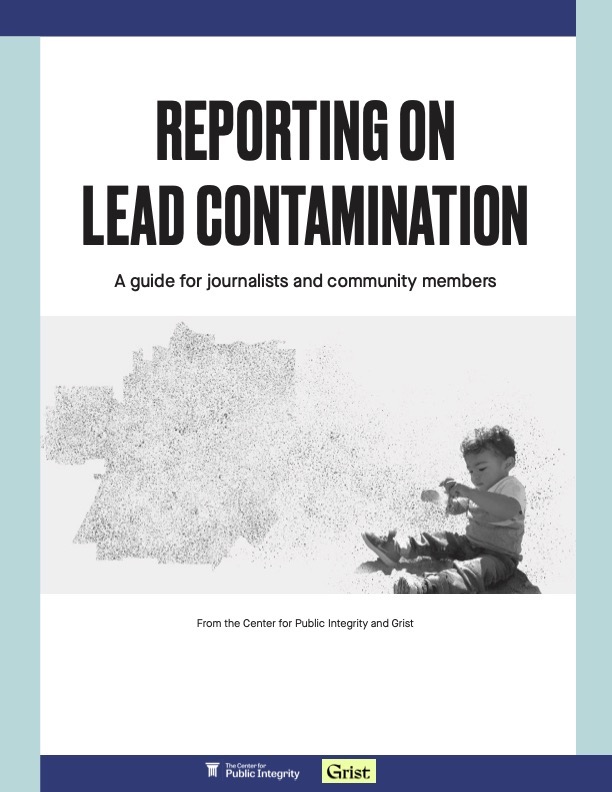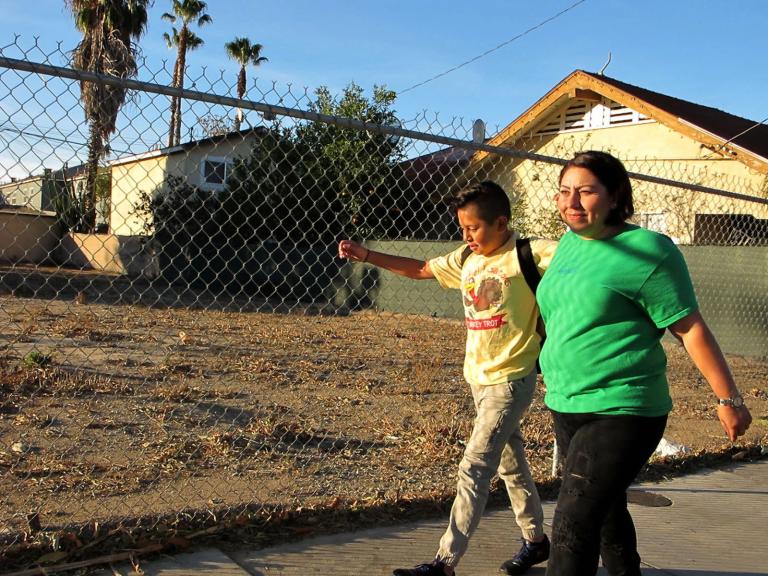Lead poisoning is often treated as if it’s a problem of the past. But its harmful legacy lingers today, particularly in the soil of urban centers across the United States.
One in every two American children under the age of 6 tested between late 2018 and early 2020 had detectable levels of lead in their blood. Studies show soil exposure is a major reason.
The lead pumped out of exhaust pipes and industrial smokestacks decades ago can still be found in soil. Lead paint used extensively throughout the first half of the 20th century remains on the interior and exterior walls of many homes, degrading into chips and dust that also end up in soil. And although the U.S. began phasing out lead in automobile gasoline and consumer paint in the 1970s, new lead pollution continues to be dumped on communities every year from industrial sites and the aviation gas used by small aircraft.
Yet while the threat of lead exposure via paint and water is well documented, soils aren’t systematically tested and mapped to prevent exposure to this invisible neurotoxin.
The Center for Public Integrity and Grist have created a toolkit to help fill these information gaps and arm journalists and community members with the skills needed to do their own testing and analysis. The detailed guide walks readers through how to test the soil, map their results, and investigate potential sources, both present and past.
As part of this effort, Public Integrity and Grist will host several training workshops on the major tools and takeaways from the new guide. For journalists interested in coverage ideas and information about testing, join us either April 23 or April 25, both at 1 p.m. Eastern (10 a.m. Pacific).
For those interested in learning more about how to tackle soil lead contamination in their communities, join us April 30 at 1 p.m. Eastern (10 a.m. Pacific). Register here. You’ll also get an invitation to an additional brainstorming session to further tailor these approaches to your area.
Experts say that identifying the environmental sources of contamination is key to preventing lead poisoning in children. Once a child has been exposed, the damage cannot be reversed, which makes environmental testing and mapping imperative.
Decades of research have shown the lasting harm for children exposed to lead, from impacts on brain development — the capacity to learn, focus, and control impulses — to later health risks like coronary heart disease. No amount, scientists say, is safe.
Our toolkit offers suggestions no matter what stage you’re at in your journey to learn about soil lead contamination. If you’d like to know what existing data indicates, for example, this map referenced in the toolkit shows how common elevated lead levels are in children by census tract or zip code in 34 states. Public health agencies fail to adequately test children’s blood for lead exposure, research shows, but existing data can point to potential trouble areas for soil, paint, or water exposure.
If you’d like to know whether the soil in your city might be contaminated but don’t have the resources to conduct widespread testing, you can start small by testing in your backyard or a handful of properties in your neighborhood. The toolkit includes information about the online portal Map My Environment, an initiative that allows you to send in test samples to be analyzed for free. You’ll also see recommendations on lead interventions.





